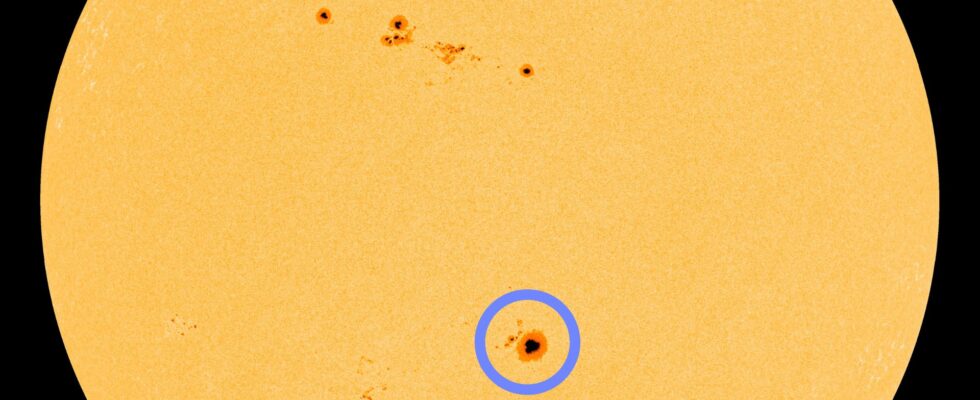A gigantic spot crosses the Sun, facing our planet. It can be observed without a telescope, but not without precaution, because one never looks at the star directly without protection.
An impressive spot is walking around on the Sun: it is so huge that we can even distinguish it without using a telescope. The astronomical phenomenon, spotted by ScienceAlert on May 24, 2023, is visible with your own eyes, provided you take precautions to observe it safely. Numerama was able to observe this from Paris, using suitable protective glasses.
This spot on the Sun is 4 times larger than the Earth
The sunspot is 4 times larger than the Earth. It is baptized AR3310 and currently faces our planet. Observed through eclipse glasses, it appears as a dark, hazy point below the Sun.
Sunspots are regions on the surface of the Sun, the temperature of which is lower than that which surrounds them. According to ScienceAlert, the AR3310 spot emitted a powerful solar flare as it passed this side of the Sun. The eruption has been classified as an “M”, meaning a medium level eruption. It is not excluded that the spot triggers another class X eruption (the most powerful that exist) while it is still facing our planet. Such eruptions can cause radio blackouts and sometimes be the source of beautiful aurora borealis.
Sunspots take about 10 days to cross the Sun (if they don’t disappear before) — the Sun takes 25 days to complete one rotation.
How to observe the sunspot safely?
You should never look directly at the Sun without suitable protection. The risk is exposing yourself to a serious eye burn. Whether to see a solar eclipse or simply admire the star, we never look at it in direct vision. Sunglasses are also prohibited. Always opt for glasses specially designed for eclipses, which can be obtained from specialized stores, such as the Maison de l’Astronomie in Paris.
Glasses must be CE certified to safely observe eclipses, planet transits or sunspots. If they are well stored, in a dry place, the glasses can be kept for one year: beyond that, do not use them any more, because their filtering power may have faded.
Also, never look through a telescope pointed at the Sun, if the instrument is not equipped with a solar filter. Observing with eclipse glasses, through a telescope without solar filter, is similarly prohibited.
The Sun is close to the maximum activity of its 25th cycle, which began in December 2019. Every 11 years, the surface of the star varies periodically, with a changing number of spots. At the peak of the cycle, more spots like AR3310 are likely to appear. We can therefore expect other surprises reserved by the Sun soon.
If you liked this article, you will like the following ones: do not miss them by subscribing to Numerama on Google News.
